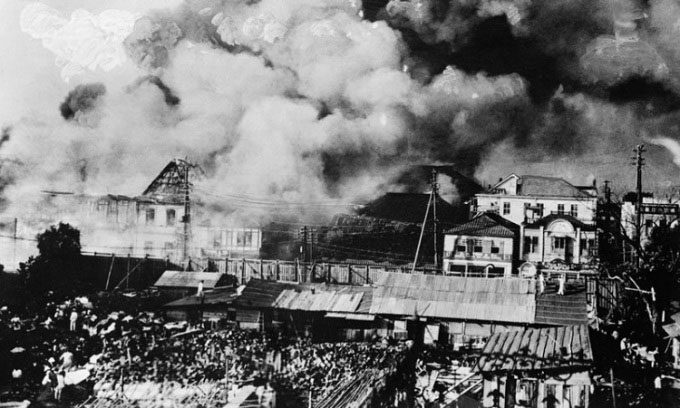Fires that broke out simultaneously after the earthquake and the ruptured water pipes caused the deaths of 105,000 residents in the Tokyo area in 1923.
On September 1, 1923, the region surrounding Tokyo, Japan, experienced a powerful earthquake measuring 7.9 on the Richter scale. The Kanto Earthquake is one of the deadliest natural disasters in history, claiming approximately 105,000 lives. However, 90% of the fatalities were not due to the earthquake or collapsed buildings, but rather to the fires that erupted afterward. This massive inferno destroyed a significant amount of land and real estate, offering numerous crucial lessons for emergency response teams, urban planners, and Earth scientists today, according to a study published on September 12 in the Bulletin of the Seismological Society of America.

Smoke billowing from a fire in Tokyo in 1923. (Photo: Japan Society).
According to the article, the fires caused by the Kanto earthquake had been predicted earlier by seismologist Imamura Akitsune, an assistant professor at the Royal University of Tokyo. Imamura hypothesized that a major earthquake would strike the Tokyo area in 1905 and warned residents that they could face prolonged fires induced by seismic activity. To prevent disaster, Imamura suggested several measures, such as removing kerosene lanterns and creating setbacks between new buildings to limit the potential spread of fires.
However, as often happens, Imamura’s warnings were ignored, and he was even ridiculed by other seismologists. Notably, a colleague, Ōmori Fusakichi, dismissed Imamura’s conclusions based on the belief that earthquakes rarely occur during stormy weather, meaning there would not be enough wind for fires to spread in such events.
Yet, Ōmori was mistaken. On the afternoon of September 1, 1923, as people in Tokyo were preparing to cook lunch, the ground began to shake, causing gas stoves and ovens to topple. Within 30 minutes, there were 100 fires across the city, according to Charles Scawthorn, a scientist at the Pacific Earthquake Engineering Research Center at the University of California, Berkeley. “Under normal conditions, the Tokyo fire department would not be able to handle all the fires, but the situation was further complicated by hundreds of broken pipelines, rendering firefighters almost powerless,” Scawthorn noted. In some instances, the fires merged to create fire tornadoes that devastated everything in their path.
In the new study, Tomoaki Nishino from the Disaster Prevention Research Institute at Kyoto University explored the impact of the fires and modeled their spread, particularly in relation to wind direction and speed. Nishino also examined how urban fires could spread in Kyoto if a similar magnitude earthquake occurred along the Hanaore fault line.
“The large fires following an earthquake are not solely dependent on the intensity of shaking but also on many other conditions such as weather and the environment. If the area consists of many fire-resistant buildings or has a low building density, large fires are less likely to occur. However, at times, the number of simultaneous fires can exceed firefighting capabilities,” Nishino explained.
The research team found that fewer than 5% of reports on the Kanto earthquake examined the fires in detail, despite the level of destruction they caused. According to their study, recent calculations indicate that the fires caused total damages exceeding $10 million, while the national budget in 1923 was $9.3 million. Instead of referring to it as the Kanto Great Earthquake Disaster, the authors argue that the event should be more accurately termed the Kanto Great Fire Disaster.
The threat of large fires following earthquakes still exists today. Areas with strong seismic activity and many large wooden buildings, such as the West Coast of the United States (including Los Angeles, San Francisco, and Seattle), Japan, and New Zealand, need to consider fire prevention in their earthquake management plans. In recent years, the threat of earthquake-induced fires has prompted Japan to install shut-off valves on gas meters in the event of a nationwide seismic occurrence.



















































